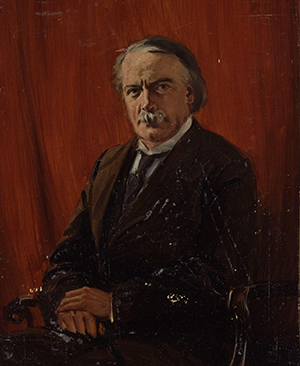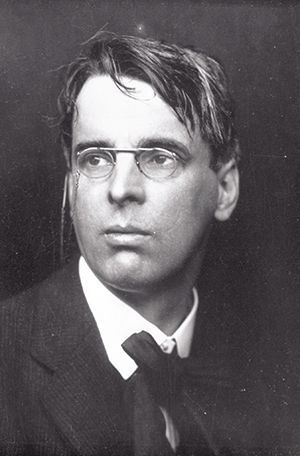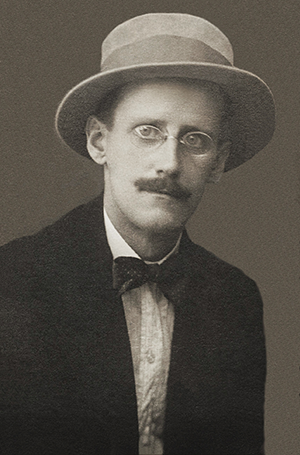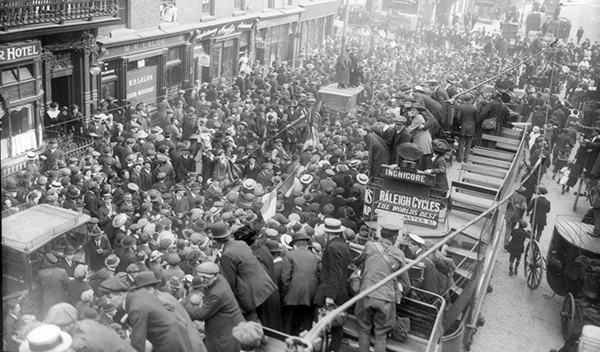The History Show: a year on from the Rising
Published in
Issue 4 (July/August 2017),
Reviews,
Volume 25
RTÉ Radio 1, 16 April 2017
By John Gibney

Above: For David Lloyd George, British prime minister since December 1916, Ireland was an issue that was best kicked into touch. (NPG)
The 101st anniversary of the Easter Rising has come and gone, and, as should be obvious, none of the enormous fanfare and investment of resources that marked last year’s centenary was evident in 2017. This can be seen as an inevitable consequence of centenary fatigue, with 2017 serving as the opportunity for a commemorative catching of breath before major anniversaries in 2018 (such as the ending of the First World War). Yet if anniversaries and centenaries can be seen as useful excuses to explore and understand the past, a focus on the specific event under scrutiny runs the risk of removing it from the historical process of which it was a part. Given the nature of much of last year’s centenary commemorations, one might be forgiven for thinking that the Rising had succeeded. Whatever about its symbolic value, the Easter Rising was, in concrete terms, a failure. Yet W.B. Yeats’s metaphor of the stone troubling the living stream is apposite, for the Rising was the catalyst for the profound political change that came in 1916–22. RTÉ’s The History Show, presented by Myles Dungan, took up the centenary baton on Easter Sunday with a specially recorded live broadcast from the National Library of Ireland, focusing on Ireland in 1917.

Above: W.B. Yeats’s metaphor of the stone troubling the living stream is apposite, for the Rising was the catalyst for the profound political change that came in 1916–22. (NLI)
normally follows a magazine format but this edition focused entirely on 1917; in doing so, it seamlessly wove together discussion, performance and pre-recordings into a coherent and very successful whole. Joining Dungan were Gearóid Ó Tuathaigh, Philip Orr, Katherine McSharry and Mark Duncan. Ó Tuathaigh got the ball rolling in incisive style with a survey of the political landscape of the United Kingdom in 1917. When viewed from London, the aftermath of the Easter Rising was merely one of a raft of issues that had to be juggled by David Lloyd George, who had succeeded Herbert Asquith as prime minister in December 1916. For Lloyd George, Ireland was an issue that was best kicked into touch. The opening of unrestricted German submarine warfare in early 1917 ensured that the British government was far more concerned with ensuring its supply lines for the maintenance of the war effort. Since attempts to secure an agreement over Home Rule had failed in mid-1916, the question was best left for another day. One has to wonder to what degree this caused Redmondite Home Rule to atrophy, given that its central purpose was being stymied by unionist hostility, the continuation of the war and British disinterest. This was the context in which the burgeoning sympathy for the leaders and ideals of the Rising was kindled by the return of those prisoners detained after the Rising, and especially by the succession of by-elections fought in 1917 that gave an increasing organisational cohesion to the amorphous grouping that was Sinn Féin in early 1917 (the formal restructuring of the party would not come until October 1917). Oddly enough, elections were a novelty in some Irish seats, as many Irish Parliamentary Party MPs had been returned unopposed. The election campaigns, as noted by Mark Duncan, attracted a new generation of activists and voters—and, indeed, women, who were still at this stage denied the vote. The car apparently came into its own as a new tool for those prepared to vote early, if not often.

Above: In 1917 James Joyce was beavering away on Ulysses in Zurich.
The essential backdrop to life in western Europe was the First World War; Ireland was no different. The Battle of Messines, in June 1917, is sometimes picked out as a prospective moment of reconciliation between unionist and nationalist, as the 16th (Irish) and 36th (Ulster) Divisions were physically placed side by side in the order of battle. According to Philip Orr, however, too much can be made of this proximity; while the officers may well have had a certain cordial familiarity, the same is highly unlikely of the rank and file. That said, there is a tragic symbolism in the death of the most famous Irish casualty of Messines, Major Willie Redmond, John Redmond’s brother and MP for East Clare; at the age of 53, he felt that he could hardly advocate recruiting unless he himself led by example, and when wounded on the battlefield he was escorted from it by a stretcher-bearer from the Ulster Division. Redmond succumbed to his wounds, and his parliamentary seat was subsequently won by Éamon de Valera: a sequence of ironic events, or a symbolic conjunction of what might have been, combined with the passing of the old order?
Political change dominates the narrative of post-Rising Ireland but, as Mark Duncan and Katherine McSharry reminded listeners, ordinary life continued. Farmers did very well out of a war that saw heightened demand for food and supplies but, conversely, massive inflation took a toll on the living standards of the urban and rural poor; teachers in particular were incensed at their low wages, while union membership increased sharply. The impact of the Russian Revolution also had a resonance, as the British authorities feared the creeping encroachment of ‘Bolshevism’ and the term ‘soviet’ was applied to a range of strikes. The first of these was a twelve-week work stoppage in the Monaghan Asylum in support of higher wages—not quite the dictatorship of the proletariat. Leisure activities continued (and seemingly ‘immoral’ activities on the streets of Dublin were policed by organisations of concerned ladies), though sporting events were inevitably disrupted. The year also saw the ongoing creation of some significant cultural milestones. James Joyce was beavering away on Ulysses in Zurich. The poems of Francis Ledwidge, another victim of the war, who was killed on the Western Front in September 1917, also made an appearance; it seems that some of them were posthumously edited to remove traces of Ledwidge’s bitterness and disillusionment with the war.

Above: The burgeoning sympathy for the leaders and ideals of the Rising was kindled by the return of those prisoners detained after the Rising, such as seen here at Westland Row, Dublin, at Christmas 1916.
This was an excellent edition of RTÉ’s flagship history programme; it managed to squeeze in a huge amount of material without ever seeming laboured, and remains available to listen to via the Century Ireland project (http://www.rte.ie/centuryireland/index.php/listen/rte-history-show-a-year-on-from-the-rising).
John Gibney is Education and Outreach Officer at Glasnevin Cemetery Museum.




















